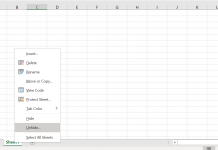Can’t delete a file in Windows? Here’s what to do…
Despite all its quirks, Windows does do some things for a good reason. Some files need to be locked down when they are in use, otherwise you risk damaging the file or harming the Operating System. Unfortunately Windows XP seems to be plagued by files that cannot be deleted. These are frequently simple files like videos (AVI), MP3s or other seemingly harmless files. You try to delete the file, Windows waits a few seconds before announcing that access is denied, the file is currently in use and cannot be deleted. However, you know it’s not in use and you just want it deleted.
If you have encountered this problem, here is a step-by-step process for trying to purge the files you can’t delete. It starts with the basics for Windows and moves on to more involved tricks. The process will work for all recent Windows releases, but Windows XP has been causing the most the problems, so we will focus on it. Please note: we are assuming that the file is not crucial to the operation of Windows – deleting important system files can cause havoc.
- Is the file in use? It sounds obvious but it happens. If it is being used or open, close the file and the application that opened it. For example, if it is a Word document, close Microsoft Word.
- If the file was opened in an application (and subsequently closed), but the program is still running, try quitting the program. Windows will lock a file because the application hasn't yet released it. This is not always Windows fault and can be the fault of the program.
- If the file is an AVI, in particular a DivX AVI, try renaming it and then deleting it. DivX files don't get on very well with Windows XP and sometimes renaming the file can trick Windows into releasing it.
- Reboot your PC and don't start any programs. Go directly to the file and delete it.
- In Windows Explorer, switch to View-Details and then select View-Choose Details. Uncheck everything except the file name. This stops Windows XP trying to read the file - this problem affects many video, audio and graphics files.
- Still no luck? OK, here is the best trick of all. Most sites give you cryptic Windows registry and DOS commands to remove a file, but the answer is so much simpler. Get a copy of MoveOnBoot or Unlocker both are free these simple tools will allow you to Move, Copy or Delete files before Windows can lock or alter the files. There are no messy boot or DOS commands, just a simple 3-step process.
Step 1: Locate the name of the file that is causing your problems.
Step 2: Decide if you want to copy, move or delete the file.
Step 3. Choose a destination for moving the file, or a new file name for the rename option (this option won't appear if you are deleting a file).
Click OK to confirm you want to process. The nice thing is that the program doesn't make you reboot straight away. It's a good idea to reboot ASAP, but if you are in the middle of something and want to wait, the program will simply run next time you start Windows. - If the file reappears again (check its creation date to ensure it is being recreated) and you can't make it budge, you may have trouble with spyware or a virus on your system (don't overlook the possibility it may also be an important system file). In this case you should get a good spyware removal program to scan your system.






